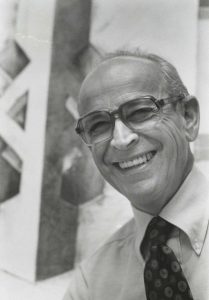
(May 8, 1919-Nov. 11, 2006). Born in Krakow, Poland, Norbert Neuss attended university in France. After Germany attacked Poland in September 1939, he joined the Polish Army in Paris as a volunteer. When France signed an armistice with the Nazis on June 22, 1940, Neuss and his unit escaped to neutral Switzerland, where he spent the rest of World War II.
In Switzerland, Neuss earned an M.S. in chemical engineering at the Federal Institute of Technology in Zurich and then went on to receive a Ph.D. in organic chemistry, in 1947, at the University of Zurich. He worked under Nobel Prize winner Paul Karrer, recognized for his work on the chemical structure of vitamin A, vitamin B2, vitamin C, vitamin E, and flavins and how these substances are transformed in the animal body.
While in Switzerland, Neuss met and married Elisabeth Osterwalder. The couple had a daughter and a son. They immigrated to the U.S. in 1949, where Neuss began working as a research associate in the Department of Chemistry at Northwestern University. In 1951, Neuss moved to Indianapolis to work for . He became a naturalized U.S. citizen in 1955. At Lilly, Neuss served as a research advisor. During his long tenure with the company, he authored approximately 100 scientific papers and several book chapters.
In Indianapolis, Neuss is better known as a strong supporter of the arts. In 1961, he and a group of other Lilly research scientists, including F. Bruce Peck, Frank P. Thomas, and Willis K. Kunz, came together to find a broadcast outlet for classical music in Indianapolis. They pooled their resources and launched , which had its first broadcast as the “Lively Arts Station” on May 13, 1961.
In 1968, with Peck, Thomas, and Kunz, Neuss became a cofounder of the Fine Arts Society. The society began broadcasting its “Second Program” on , then the radio station of the Indianapolis Public Schools, in November 1969. Initially limited to 12 hours each weekend, the society expanded its broadcasts to six nights a week in November 1970, and three years later introduced a morning edition of the “Second Program.” Neuss’s voice became well-recognized on the broadcast. In 1986, he and the Fine Arts Society won a George Peabody Award, given for “powerful, enlightening, and invigorating stories” in radio, television, and media.
Neuss also contributed “Totem,” a 33-foot sculpture by Rinaldo Paluzzi, an American-Spanish abstract painter and sculpture, which is featured at . He made possible the restoration of a 1954 mural by Indianapolis artist , which is on display at the Indianapolis .
In addition to the Fine Arts Society, Neuss was a board member of the and served on the Fine Arts Committee of the . He received honorary doctorates from and the . He also is an Indiana Broadcast Pioneer.
The Fine Arts Society reincorporated as in 2017. Neuss’s legacy continues with its broadcasts on , the public radio station affiliated with the University of Indianapolis.

Help improve this entry
Contribute information, offer corrections, suggest images.
You can also recommend new entries related to this topic.